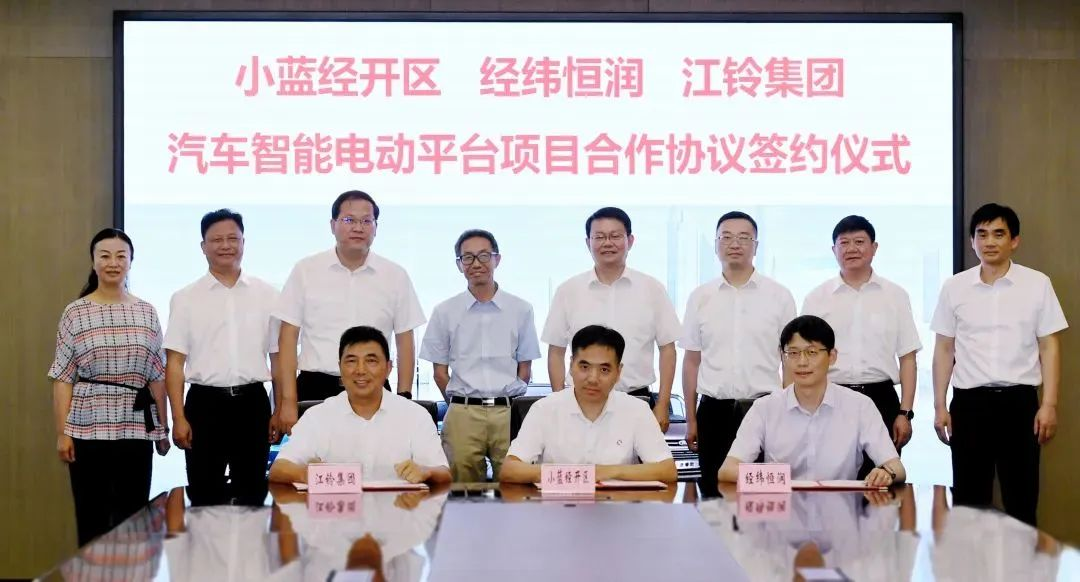HiRain Technologies, Jiangling Motors to co-build intelligent electric vehicle platform in Nanchang
Shanghai (ZXZC)- Chinese tier 1 supplier HiRain Technologies, Jiangling Motors Group Co., Ltd. (“JMC”), and the authority of Nanchang Xiaolan Economic and Technological Development Zone (“Nanchang Xiaolan”) inked a tripartite agreement for an intelligent electric vehicle platform project.
Under the agreement, HiRain Technologies and JMC will jointly develop an intelligent electric vehicle platform project in Nanchang Xiaolan, Nanchang city, Jiangxi province by leveraging their respective strengths. The project will primarily focus on the R&D, production, and sales of automotive electronic products, new energy vehicle battery packs, and integrated chassis.

Photo credit: JMC
Established in 2003, HiRain Technologies has been dedicated to providing electronic products, R&D services, and high-level intelligent driving solutions for customers in the automotive and unmanned transportation fields. The company aims to become a world-class comprehensive electronic system technology service provider, an intelligent connected vehicle full-stack solution supplier, and a leader in advanced-level intelligent driving MaaS (Mobility as a Service) solutions. In 2022, the company went public on the Science and Technology Innovation Board.
As for JMC, it is a well-established domestic vehicle manufacturing group that produces commercial vehicles, passenger vehicles, special vehicles, and new energy vehicles. The company possesses independent R&D and manufacturing capabilities for key components. In 2022, JMC achieved operating revenue of 101.6 billion yuan, with total vehicle sales of around 333,500 units. Among them, passenger vehicle sales volume reached 88,700 units, representing a year-on-year increase of 45.8%. The company also exported 65,300 vehicles last year, showing a year-on-year growth of 92%.
This three-party collaboration focuses on the development of the intelligent electric vehicle platform. The platform-based approach allows for the use of common architectures during the vehicle development process. It encompasses a comprehensive system from the development stage to the manufacturing process, with battery packs and integrated chassis being key areas of focus.

